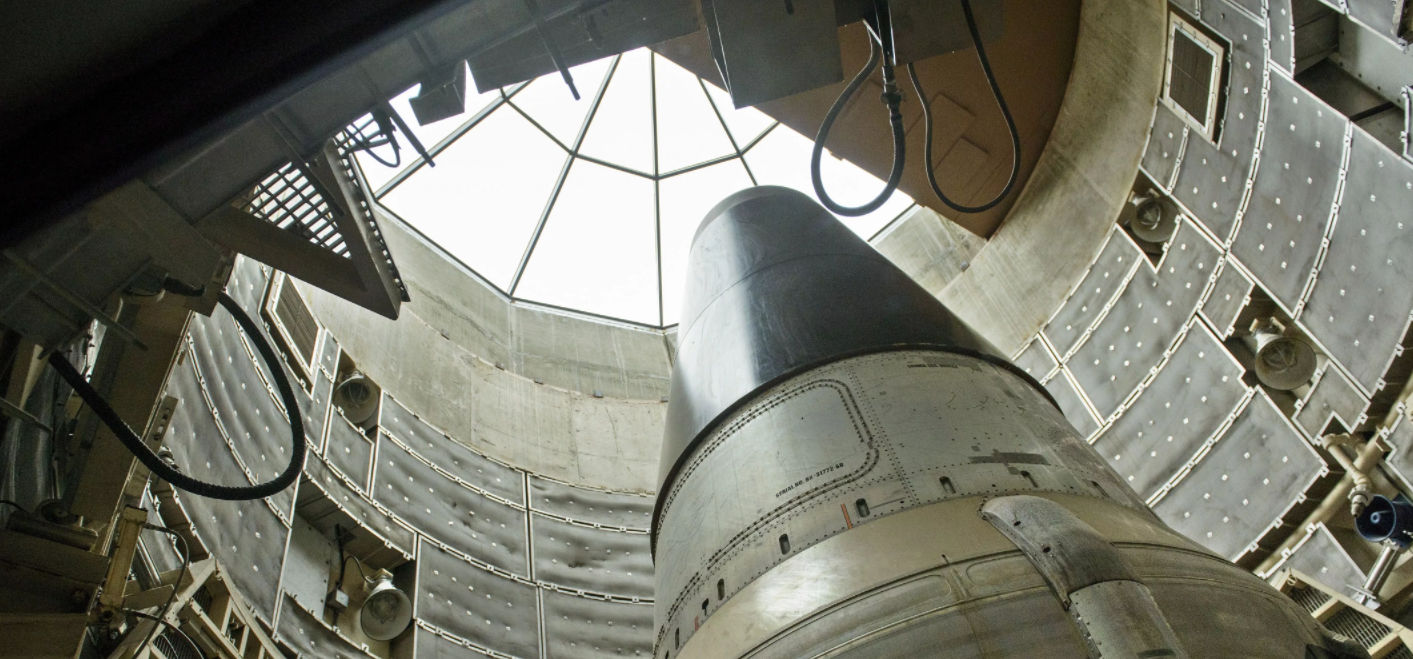By George Landrith • American Military News
 North Korea has test fired five new missiles and claims to have successfully tested a miniaturized hydrogen bomb. Iran too is racing towards nuclear weapons and advanced missile technology. Around the globe, risks are increasing. As a result, deterrence is more important than ever.
North Korea has test fired five new missiles and claims to have successfully tested a miniaturized hydrogen bomb. Iran too is racing towards nuclear weapons and advanced missile technology. Around the globe, risks are increasing. As a result, deterrence is more important than ever.
There was a time when deterrence simply meant having retaliatory nuclear weapons. But the risks are far more complex than a generation ago. Maintaining a strong and credible nuclear deterrent is absolutely necessary. But by itself, it is not enough. Today, the risks are too varied to have a single solution. The US must have a robust, multifaceted, broad-based deterrent to stop the world’s evil doers. A modern military deterrent includes: (i) a strong up-to-date nuclear threat; (ii) a robust multi-layered missile defense; and (iii) a powerful conventional military force that can meet any threat and defeat any foe.
The need for a nuclear deterrent is clear. If any nation is tempted to use nuclear weapons, they must know that the retaliatory nuclear strike that would follow, would be devastating. With our nuclear weapons aging and more than a generation old, however, we must make needed upgrades to our nuclear triad.
But how does one deter non-traditional threats? North Korea has unstable, erratic, and insane leadership. Iran and ISIS have a warped ideology that makes them hard to predict. They seek destabilization to usher in the end of times. The threat of a retaliatory strike may not deter them and might even encourage them.
A robust, multilayered missile defense is a powerful deterrent. From the bad guy’s perspective, it would be the worst possible outcome if an attempted nuclear strike is intercepted and destroyed. First, the US looks capable and strong and the bad guys look foolish and weak. Second, once the nuclear threat is intercepted and destroyed, there must be an overwhelming response of some sort to remove the evil doer from power. This would make it clear to the world that such behavior results in death and destruction of the perpetrator.
Such an effort will likely take a strong conventional military force that can defeat any enemy around the globe. Our military forces have been fighting an active war for 15 years. Yet we have not been upgrading or replacing our major defensive systems at a rate sufficient to keep up with the risks we face, or the pace at which we are using them up.
For example, Air Force aircraft are on average 26 years old — the oldest ever. Some aircraft are more than 50 years old. We have the smallest Navy we’ve had in 100 years. Our aircraft carriers have a severe shortage of F-18 aircraft that will only get worse in the next 25 years. Even as the F-35 comes online, we will have a severe shortage of aircraft — meaning that about 1/3 of our aircraft carriers will not be combat ready. This makes our Navy even smaller.
We will be fighting terrorists for the foreseeable future. We must be smart and not get bogged down. But we cannot ignore the terrorist threat. ISIS has grown in strength because we ignored them for too long. Special units, trained and equipped to hunt down terrorists will likely play a key role. But they will need support like that provided by the A-10 Thunderbolt — the world’s most effective close support aircraft which is inexplicably slated for phase out.
A Navy Seal friend told me terrorists attempt to flee as soon as they hear an approaching A-10. But it is too late for these cowards because the A-10 is designed from the tip of its 30 mm gatling gun to its tail mounted twin engines to fly low and slow and take out anything — from soft targets like terrorists to hard targets like tanks — with deadly efficiency.
But in a Pentagon pressed to fight a long war and meet budget demands, unwise bean counters may kill off this able terrorist killer and defender of our forces. Even the GAO concludes axing the A-10 is foolhardy. These are only a few examples of defensive systems we must update and provide in quantity to our war fighters.
We live in an increasingly dangerous world. We must think strategically and practically about what is needed to defend ourselves, and deter and defeat our enemies. We must give our forces the advantages they need to win, and to return safely home. All of this is deterrence. We must make this commitment to our fighting men and women, and to the cause of freedom. If we don’t, we endanger both our war fighters and our nation.